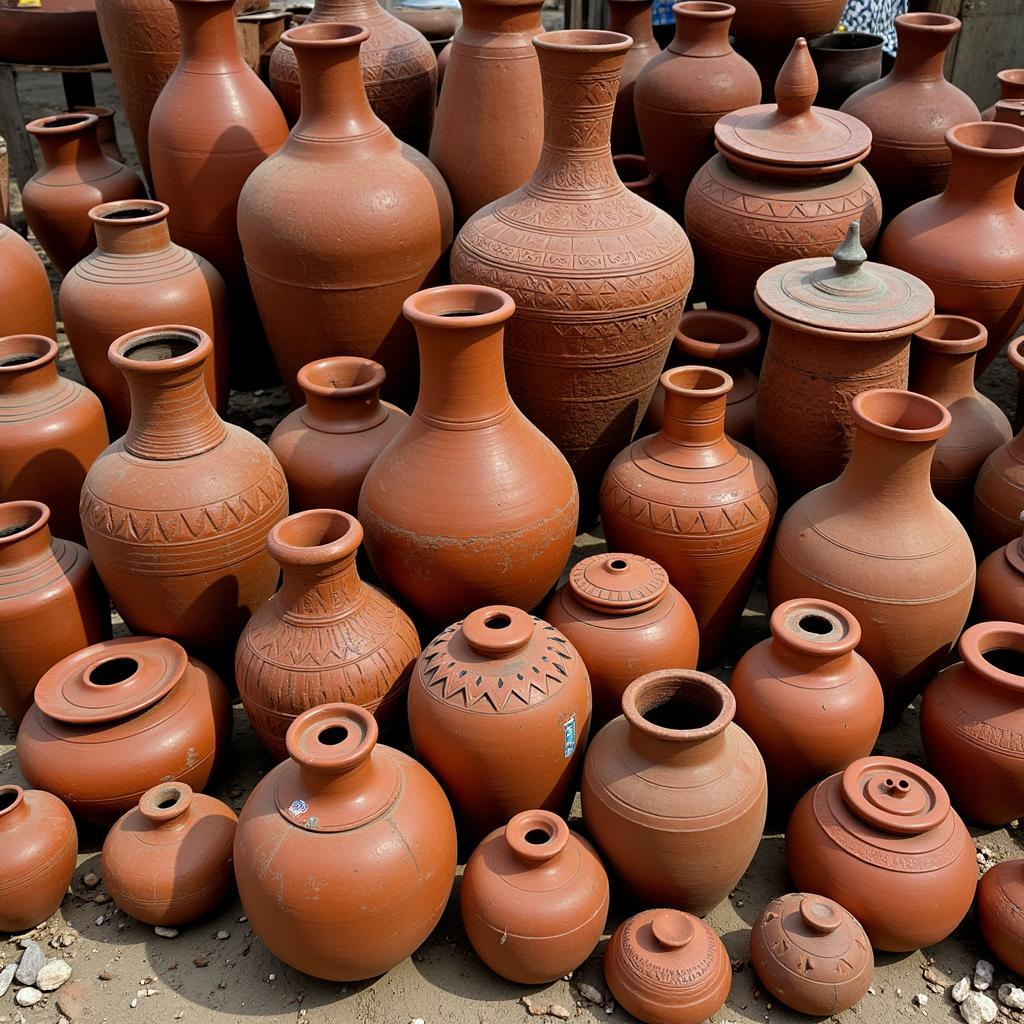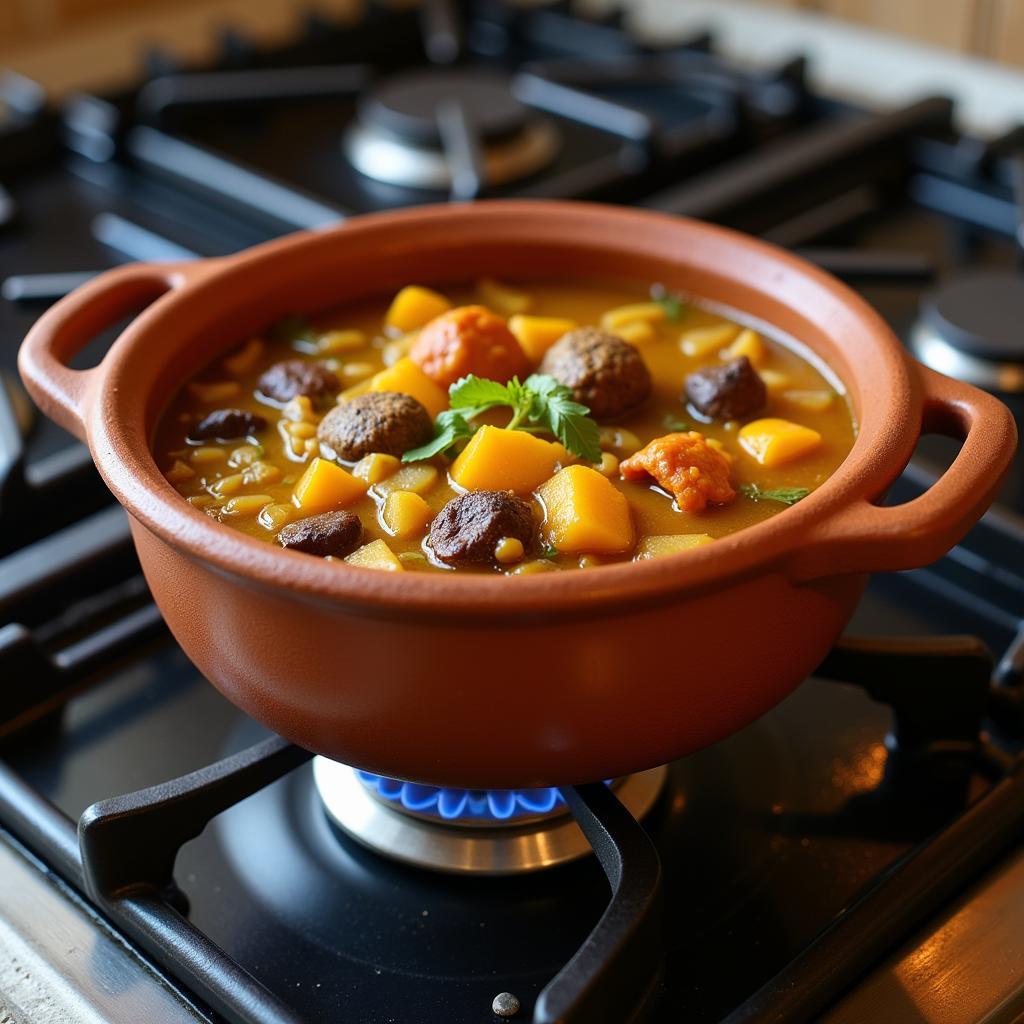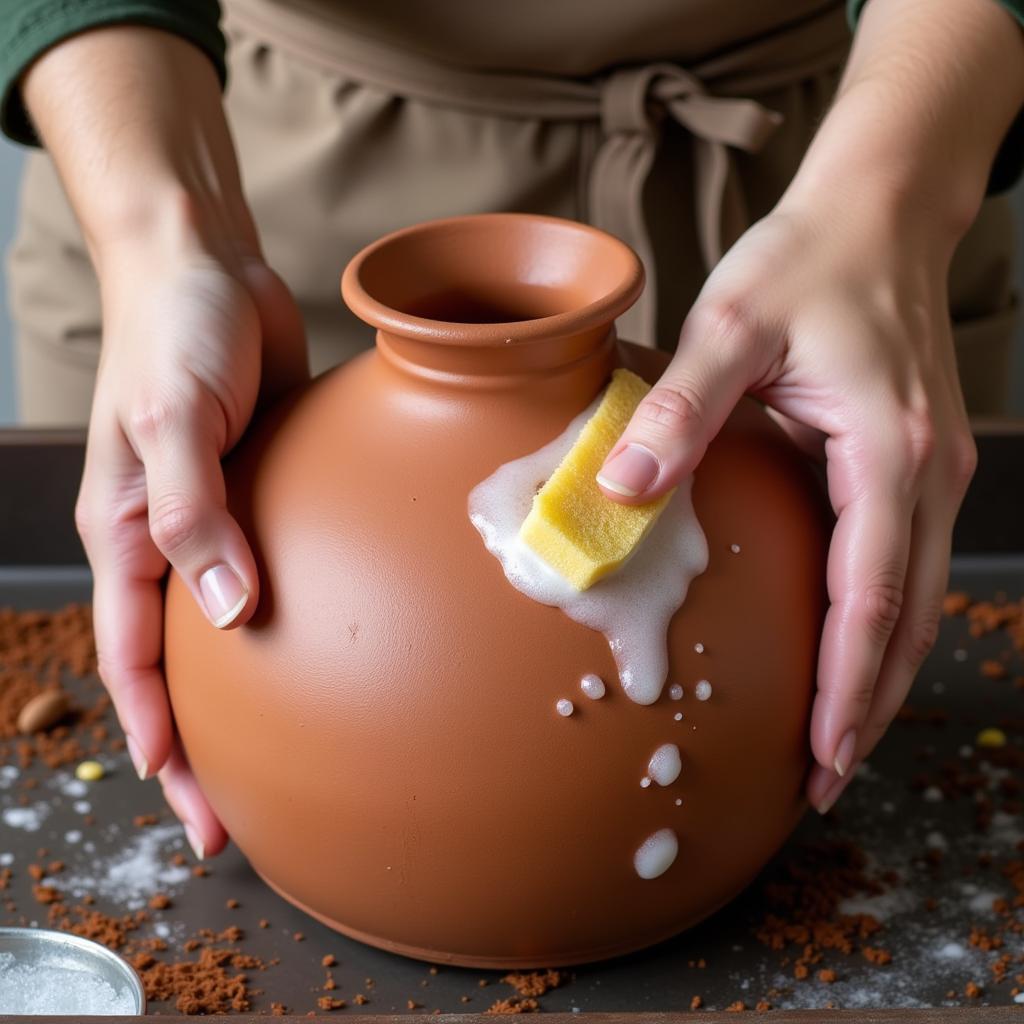African Clay Pots for Cooking in the UK: A Taste of Tradition
African clay pots, or as they are fondly called in various languages across the continent – “ungcwecwe,” “isidudu,” “umcwembe,” or simply “clay pots”, have been a cornerstone of African cuisine for centuries. Now, these beautiful and functional pieces of culinary heritage are gaining popularity in the UK, bringing a taste of Africa to kitchens across the country. But what is it about these simple pots that make them so special?
 Variety of African Clay Pots
Variety of African Clay Pots
The Allure of African Clay Cooking
The beauty of African clay pots lies in their simplicity and unique properties. These pots are made from natural clay, sourced directly from the earth, and fired in traditional wood-burning kilns. This gives them a distinctive earthy aroma and taste that infuses into food, adding a depth of flavour that is unmatched by modern cookware. But it’s not just about the flavour.
“The beauty of cooking with clay lies in its ability to enhance the natural flavours of the ingredients,” says Chef Abena Asare, a renowned Ghanaian chef based in London. “The porous nature of the clay allows for even heat distribution and gentle cooking, resulting in food that is incredibly moist and flavourful.”
 African Clay Pot Cooking on Stove
African Clay Pot Cooking on Stove
Choosing Your Perfect African Clay Pot
When it comes to choosing African clay pots for cooking in the UK, you’ll find a variety of options available. From tagine-style pots with conical lids perfect for slow-cooked stews to round-bottomed pots ideal for hearty soups and stews, there’s a clay pot to suit every need.
Here are a few things to keep in mind when choosing your pot:
- Size: Consider the size of your household and your cooking needs.
- Shape: Different shapes lend themselves to different cooking styles and dishes.
- Origin: Explore pots from different regions of Africa, each with its unique design and craftsmanship.
Caring for Your Clay Pot
African clay pots are surprisingly durable and can last for generations with proper care.
Here are a few care tips:
- Seasoning: Before first use, it’s important to season your clay pot to prevent cracking. This can be done by soaking the pot in water overnight and then rubbing it with oil.
- Gentle Heat: Clay pots are sensitive to sudden temperature changes. Avoid placing a cold pot on a hot stovetop. Always heat and cool the pot gradually.
- Handwashing: Clay pots are porous and should be hand washed with warm soapy water. Avoid using harsh detergents or abrasive cleaners.
- Drying: Allow your clay pot to air dry completely before storing to prevent mould and mildew.
 Cleaning an African Clay Pot
Cleaning an African Clay Pot
More than just Cooking: Clay Pots in African Culture
Beyond their practical use, African clay pots hold a deep cultural significance. They are often seen as symbols of abundance, fertility, and community. In many African cultures, clay pots are used for ceremonial purposes, passed down through generations as cherished heirlooms.
By bringing an African clay pot into your kitchen, you are not just embracing a unique cooking style, but also connecting with a rich cultural heritage. It’s about slowing down, savouring the process of preparing food, and creating dishes that nourish both body and soul.
So, why not embark on a culinary adventure and experience the magic of African clay pot cooking in your own home? You might be surprised at the flavours you discover and the stories these pots have to tell.



